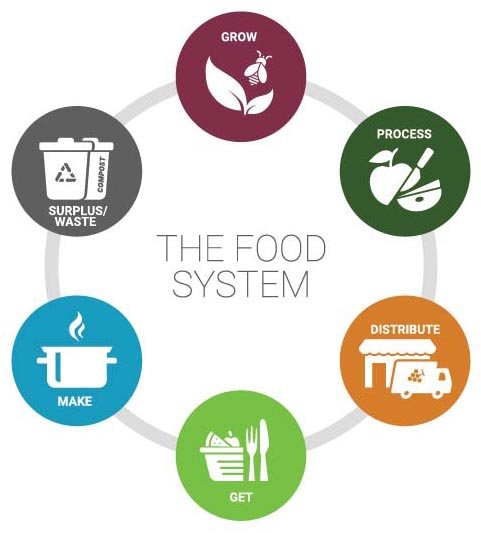By Jessi Bustamante & Maddy Johnson
The mission of Food To Power is to grow a healthy, equitable food system that provides culturally relevant food for all… but what do we mean when we say food system?
Many people experience food as going to the grocery store, picking up what they want, taking it home and then cooking what they had in mind. However, the food system involves a lot more than that. As stated by the International Food Policy Research Institute, “Food systems are the sum of actors and interactions along the food value chain—from input supply and production of crops, livestock, fish, and other agricultural commodities to transportation, processing, retailing, wholesaling, and preparation of foods to consumption and disposal.” Some components are easy to identify, such as farmers and consumers, while others are less immediately apparent, such as the variety of factors that determine where to transport food. Each portion of the food system plays a role in price determination and what is available.
Here are some examples of where the food system has led to inequitable outcomes, either by design or as an unintended consequence:
Monsanto has patented their bioengineered seeds and goes so far as to sue small-scale farmers for planting and replanting seeds from the resulting crops to protect their own financial interests
Crops subsidized by the federal government are overall less focused on healthy options like fruit and vegetables and instead are more suitable for highly processed foods
Decisions are made in what type of food is brought to what types of neighborhoods that result in unequal access to healthy food
Policies encourage environmentally harmful farming processes instead of regenerative practices
Reviewing the different stages of the food system is clearly a several part exploration, but this overview introduces some of the elements that we will be looking at more in-depth in the upcoming weeks. Join us as we strive to grow a healthy, equitable food system.


